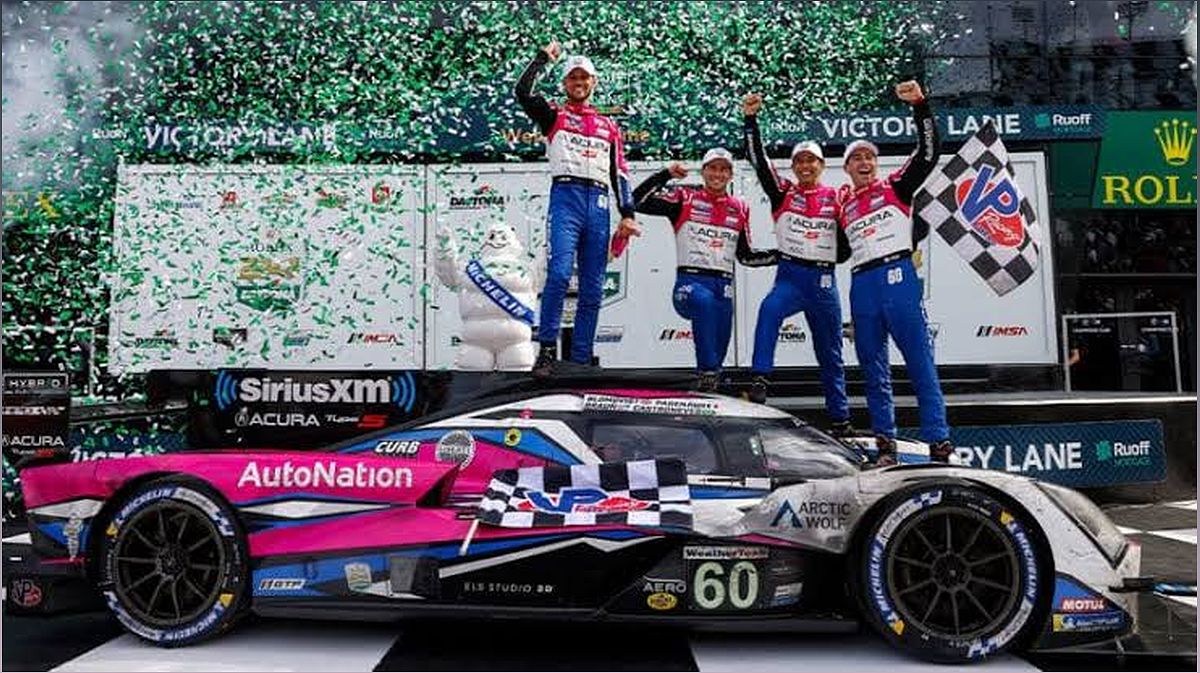Get ready for an exhilarating season of sports car racing as the new GTP cars and the Hypercar class in WEC take the stage. Despite initial doubts, the recent 24 Hours of Daytona showcased the reliability, speed, and technological prowess of these cars. With a shared rulebook focused on cutting budgets without compromising performance, the top-level GTPs delivered a nail-biting race, with the top four cars separated by just 11 seconds. Witnessing the jousts and close competition, it's clear that this is a truly exciting time for sports car racing. Join us as we delve into the complexities and technicalities of these new cars and the anticipation they bring for the future of the sport.
The Rise of the New GTP Cars
The 24 Hours of Daytona provided a thrilling showcase of the new era of sports car racing, with the spotlight on the new GTP cars. Despite initial doubts, these cars proved their reliability, speed, and technological prowess, leaving racegoers in awe. The top-level GTPs, most of which will compete in the Hypercar class in WEC, delivered an intense race, with the top four cars separated by a mere 11 seconds.
The shared rulebook, prioritizing budget cuts over pushing boundaries, has resulted in a more competitive field. The manufacturers, IMSA, and the regulations deserve credit for bringing the cars to such close competition. This new era of sports car racing promises an exciting future for fans and participants alike.
Complexity and Technical Advancements
The new GTP cars have introduced a higher level of complexity and technical sophistication to sports car racing. Drivers now have more control over handling and balance, making the driving experience more intricate. While the cars may be slightly slower in corners, the higher-speed turns require a more technical approach.
The manufacturers, IMSA, and the regulations have successfully raised the bar in terms of technological advancements. These cars are a testament to the innovation and engineering prowess of the industry. As a result, sports car racing has become a more technically challenging and thrilling spectacle.
Competition and Anticipation
The new regulations have sparked intense competition among manufacturers, creating a highly anticipated season for sports car racing. The recent race at Daytona showcased the competitiveness of the field, with Cadillac and Acura dominating the top spots. The anticipation of additional competition from other brands in the future adds an extra layer of excitement to the sport.
While Acura and Honda have not confirmed their plans for WEC, their impressive performance at Daytona suggests that they would be foolish to neglect the opportunity for Le Mans glory. The paddock is buzzing with excitement, united in the belief that these new regulations will bring a new level of competition and spectacle to sports car racing.
The Thrill of the Sound and Variety
The new GTP cars have not only impressed with their performance but also with their captivating sound and visual appeal. Spectators at the Daytona race were enthralled by the nat-asp V8 war cry of the Cadillac, while also appreciating the variety offered by all four GTPs. The aural and visual spectacle of these cars has reignited the excitement of fans and added a new dimension to the sport.
BMW and Porsche also attracted a significant following, with enthusiasts gathering to witness the M Hybrid V8 and 963 in action. The return of these iconic brands and the introduction of a solely hybrid class of cars have brought a fresh relevance to the sport. The combination of performance, sound, and visual variety has truly elevated the experience for both fans and participants.
Challenges and Renewed Competitiveness
Porsche's finish, 34 laps behind the lead Acura, highlights the challenges faced by teams in this highly competitive field. The renewed breadth of competitors drawn in by the enticing new regulations has raised the bar for all participants. Mistakes are not tolerated with the increased number of cars on the grid, making it crucial for teams to perform flawlessly.
The competition is expected to be fierce, with no single brand dominating the podium consistently. The return of Ferrari to WEC has further intensified the competition, and Porsche is delighted to race against such formidable opponents. The challenges and competitiveness brought by the new regulations ensure that sports car racing will be a thrilling and unpredictable spectacle for fans around the world.
The United Excitement and Bright Future
The unity between IMSA and WEC has brought together teams and fans, creating a shared excitement for the future of sports car racing. The collaboration between the United States and France in establishing common rules and standards has been met with enthusiasm from the industry. The manufacturers and fans alike are thrilled about the prospect of more intense competition and the return of iconic brands to the sport.
The recent record attendance at the Rolex 24 and the sold-out tickets for Le Mans demonstrate the growing popularity and bright future of sports car racing. With the sport on the precipice of a new renaissance, the anticipation and excitement are palpable. The united passion and dedication of all involved ensure that the future of sports car racing looks incredibly promising.

